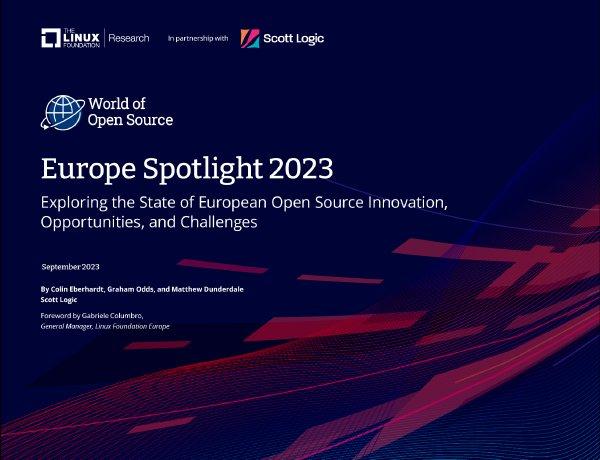 This article was originally published on the OSOR platform of the European Commission.
This article was originally published on the OSOR platform of the European Commission.
Linux Foundation (LF) published the European edition of its Global Spotlight 2023 Survey, “Exploring the State of European Open Source Innovation, Opportunities, and Challenges.”
The LF report brings interesting insights into the state of open source program offices (OSPOs) in Europe. About half of the respondents admitted that their organisation lacks an OSPO, and for end-user organisations (defined as businesses using IT products and services to support their deliverables), only one in three has the guiding principles and practices for open source adoption in place. While the business value of using open source software (OSS) is well understood – with most respondents (57%) indicating that the value they perceive from open source has increased over the last year – there is a clear need for a better promotion and take-up of OS governance structures.
When it comes to limiting factors, organisations point to legal or licensing concerns (36%), a fear of IP leak (36%) and a clear lack of return of investment (30%) as the top three obstacles to greater OS contributions. Interestingly enough, the results did not find a single leading factor but rather showed that for any given reason, the number of respondents who agreed that it limited their organisation’s OSS contributions was almost equal to the number who disagreed with that sentiment. This shows the divergence of views on the issues that greater OS adoption can run into.
The report also investigated the professional-personal split in OS contributions. As such, when contributions occur at work, they might be to projects managed by other teams within their organisation (a practice known as inner source), company-founded or -adopted open source projects, or third-party open source projects. Among these, the report found inner source activities to be the most prevalent, closely followed by time spent contributing to their organisation’s own projects and third-party open source projects. Close to half (47%) of respondents tend to spend some time each week at work contributing to external projects, even where no commercial relationship exists with their employer.
Over 90% of respondents consider open source to be valuable to the future of their sector and, as the report points out, “given that 72% of respondents are working in organisations that are not cross-industry IT vendors, this highlights just how widespread open source has become.” However, a conflicting view of the relationship between open source and security persists – three in four respondents believe that OSS is more secure than proprietary software, but they rank improved security last when considering the benefits of OS use.
Overall, the report highlighted that while the value of open source is growing and the momentum is increasing, the public sector is not seeing the growing value of OS perceived by others. Much work remains to be done to improve the awareness among businesses of the utility and benefits of open source applications.